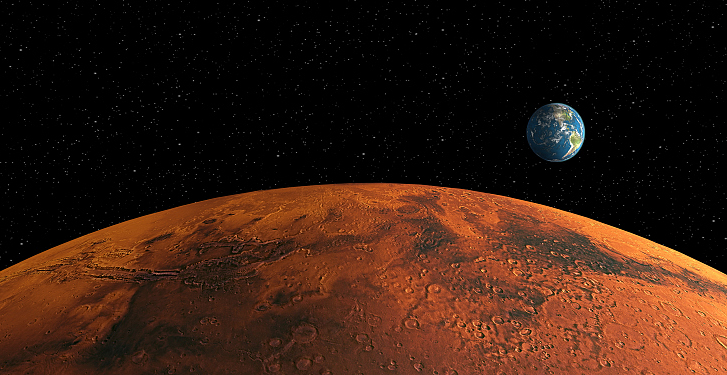Washington: NASA’s InSight lander has enabled scientists to measure the biggest quakes ever witnessed on Mars.
September 18, NASA’s InSight lander celebrated its 1,000th Martian day, or sol, by measuring one of the biggest, longest-lasting marsquakes the mission has ever detected. The temblor is estimated to be of 4.2-magnitude and shook for nearly an hour-and-a-half, NASA said in a statement.
This is the third major quake InSight has detected in a month: August 25, the mission’s seismometer detected two quakes of magnitudes 4.2 and 4.1.
The previous record holder, which InSight measured in 2019, clocked in at magnitude 3.7 — about five times less powerful than a 4.2-magnitude quake.
Before NASA’s InSight spacecraft touched down on Mars in 2018, the rovers and orbiters studying the Red Planet concentrated on its surface.
The stationary lander’s seismometer has changed that, revealing details about the planet’s deep interior for the first time.
The mission aims to study seismic waves to learn more about Mars’ interior.
While the teams are studying the September 18 quake, scientists have made some analysis of the August 25 quakes. According to them, the 4.2 magnitude event occurred about 8,500 kilometres from InSight. It’s the most distant quake the lander has detected so far, NASA said.
They also determined that the shaking occurred too far from where InSight had detected almost all of its previous large quakes — Cerberus Fossae — a region roughly 1,609 kilometres away where lava may have flowed within the last few million years.
The scientists are working to pinpoint the source and which direction the seismic waves travelled.
“One especially intriguing possibility is Valles Marineris, the epically long canyon system that scars the Martian equator. The approximate center of that canyon system is 9,700 kilometres from InSight,”NASA said.
Further, the team also found that the August 25 quakes were different from each other. The magnitude 4.2 quake was dominated by slow, low-frequency vibrations, while fast, high-frequency vibrations characterised the magnitude 4.1 quake. The magnitude 4.1 quake was also much closer to the lander — only about 925 kilometres away.
“Despite their differences, the two August quakes do have something in common other than being big: Both occurred during the day, the windiest — and, to a seismometer, noisiest — time on Mars,” NASA said.
InSight’s seismometer usually finds marsquakes at night, when the planet cools off and winds are low. But the signals from these quakes were large enough to rise above any noise caused by wind, the US space agency noted.
IANS






































